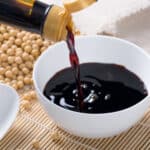Oyster Sauce vs Fish Sauce: Are They The Same?
Here's a quick and simple guide to two of the most widely used sauces in Asian cuisine - Oyster Sauce and Fish Sauce.
Instructions
Key Differences:
- Cultural and Historical Origins: Oyster Sauce, rooted in Chinese cuisine, is a relatively modern invention dating back to the late 19th century. Fish Sauce, however, has ancient origins, with evidence of its use in Mediterranean and Southeast Asian cuisines.
- Flavor Profile: Oyster Sauce offers a sweet and salty flavor with an earthy undertone, while Fish Sauce is known for its prominent salty and nutty taste with a fishy aroma. The sweet flavor of Oyster Sauce is due to the caramelization process, contrasting with the salty flavor and fishy notes of Fish Sauce.
- Consistency and Appearance: Oyster Sauce boasts a thick consistency, akin to a syrup or thick sauce, with a dark brown color. Fish Sauce, in contrast, is known for its watery, clear texture and reddish-brown or amber hue.
Similarities:
- Asian Cuisine Staples: Both are popular condiments in Asian dishes, particularly Chinese, Thai, and Vietnamese cuisine, adding depth and umami to culinary creations.
- Umami Flavor: Each sauce contributes a rich umami taste, enhancing the savory flavor in various dishes.
- Versatility: They are versatile and suitable for stir-fries, marinades, dipping sauces, and key ingredients in traditional Southeast Asian dishes.
- Fermentation Process: While their ingredients differ, both sauces undergo fermentation (oyster extract for Oyster Sauce and small fish for Fish Sauce), which is crucial for developing their distinctive flavors.
- Salty Taste: Both sauces have a notable salty flavor, though Fish Sauce has a higher sodium content.
- Cultural Significance: Each sauce holds cultural significance in Asian culinary traditions, essential in creating authentic flavors in numerous popular dishes.
